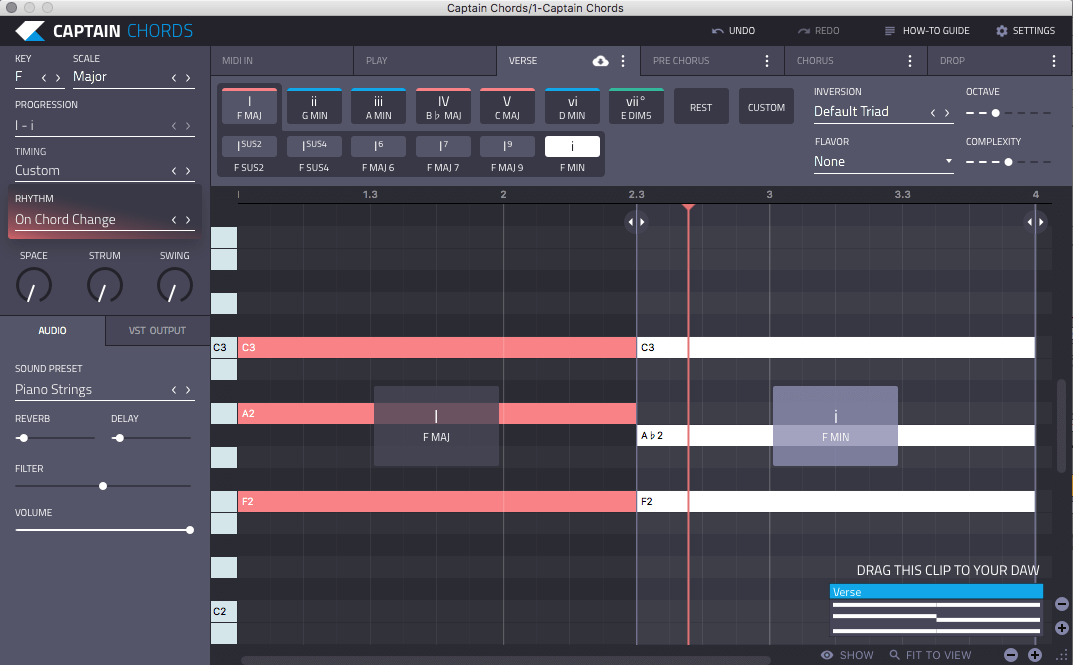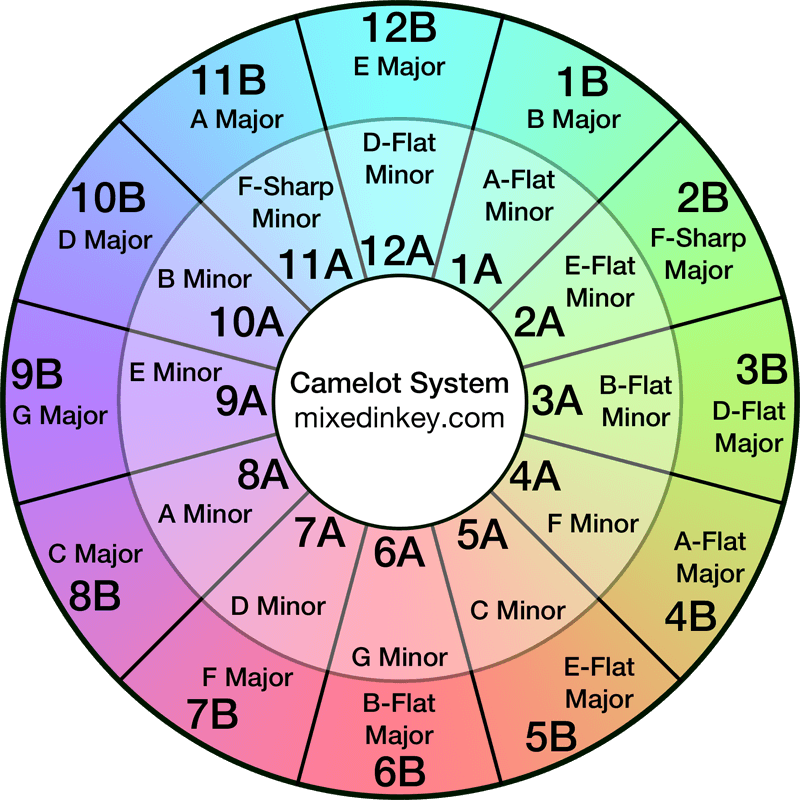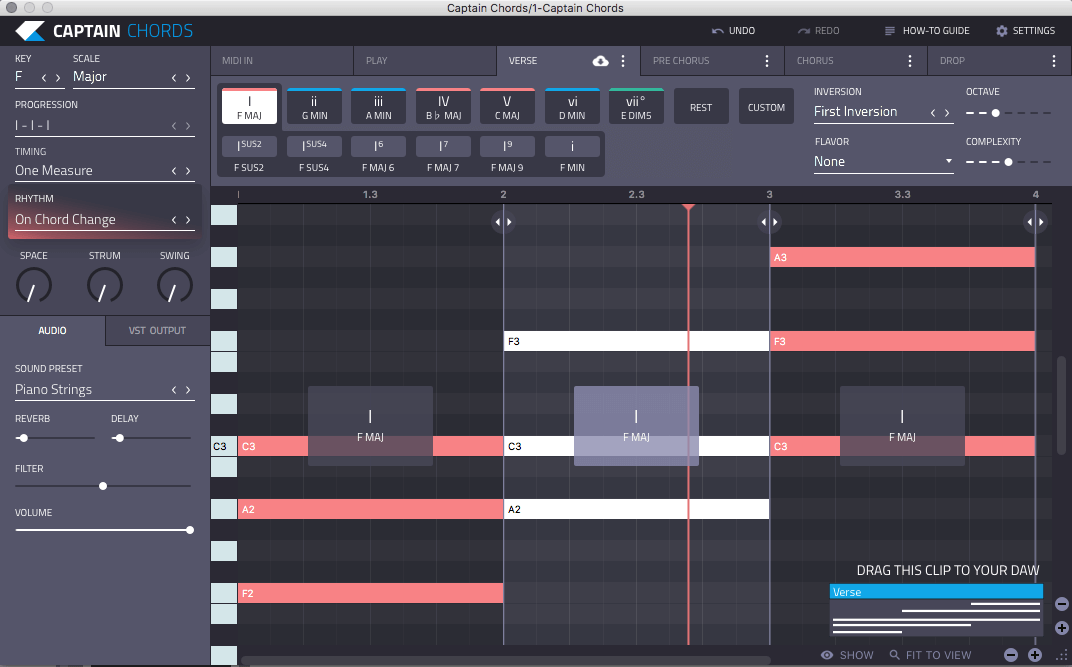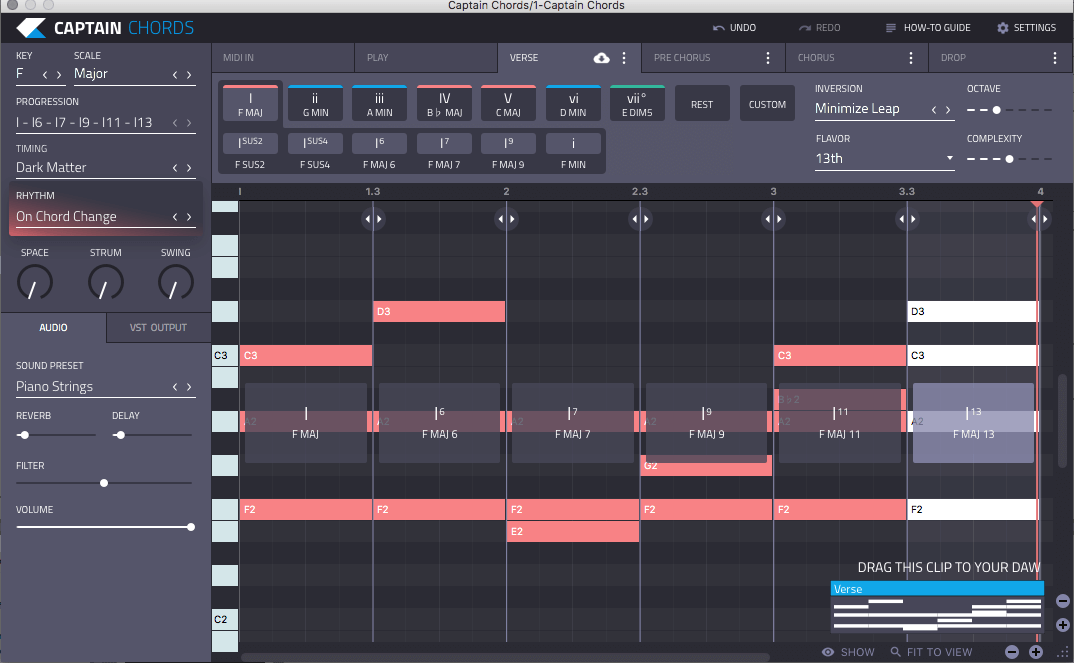The chord of F Major

Go with the flow
Chords have characteristics. Personalities, almost. Master composer Schubert even wrote a directory to explain this, in which he proclaimed F Major to be full of “complaisance & calm” while another classical composer, Helmholtz, described the sound of F Major as “Peace, joy, light, passing regret, religious sentiment”.
These descriptions may be several hundred years old, but play F Major on the piano and you will surely notice its tranquil, contemplative sound.
F Major can be used in a broad range of genres and particularly suits music which is earnest, intense and delivered with conviction. It’s one of Taylor Swift’s most commonly used keys, and is great for ballads, rock songs, country and pop.
Write chords faster with Captain Chords
- Write your own chord progressions
- Apply rhythms to your chords
- Set your Key and Scale for the entire song
- Explore different chords and discover your favorite combinations
- Compose music and write your own songs
- One touch plays 3 notes of the chords
F is for Feelings
F Major is used in 44% of songs analyzed in Hook Theory, such as Jessie J – Price Tag, Red Hot Chilli Peppers’ By The Way and Aerosmith’s classic tune Cryin’. These tracks are all eithr impassioned and earnest or tranquil, reflective and emotive – or all these emotions at once!

Let’s analyze F Major. Like all tonal chords, it’s generic form is a triad – or three notes played simultaneously – and it starts with it’s own root note, which is, of course, F.
The magic number
Every triad starts with the root note and ends with a perfect fifth – five whole notes up from the root. The middle note is really important as it decides whether the chord is Minor or Major. Check out this simple chart below:
| F Chord | Root (AKA ‘Tonic’) | Interval 1 | Interval 2 |
|---|---|---|---|
| Major | F | A | C |
| Minor | F | A Flat | C |

The chart shows us the simple difference between F Major and F Minor. It also tells us that F Major consists of three notes: F, A and C.
Relatively speaking
Every Major chord has a relative Minor chord that complements it. If you’ve ever seen the Mixed in Key Harmonic Mixing Wheel (AKA the ‘Camelot’ Wheel) you’ll be familiar with the way chords ‘connect’ based on their position on the wheel.

The outer ring has the Major chords, the inner ring has Minors. Look at the lower left side of the wheel. 7B = F Major, and is positioned next to 7A = D Minor. These are ‘relative’ chords – very useful when writing chord progressions as you know they’ll sound ‘correct’ even when played on top of one another.
Minimize the Leap
When playing F Major, you can change the way it’s played and play either of the triad notes at the bottom. Check out the video example below, where you can see and hear the difference between the three ways of playing the same chord. The sound is almost the same and the pitch is identical. These are sometimes referred to as inversions.
These inversions are scored in different ways:
First Inversion
| Bottom | Middle | Fifth |
|---|---|---|
| A | C | F |
Second Inversion
| Bottom | Middle | Fifth |
|---|---|---|
| C | F | A |

Why invert?
Inverting chords gives musicians different ways of playing the same chord in different positions on the keyboard – minimizing the distance between chords. That’s where the term ‘Minimize the leap’ originates – something you can easily replicate in Captain Chords.

Flavors and Suspended Chords
We can make F Major more complex and interesting by adding additional notes. It’s like adding spice to your chord – so be careful not to overdo it.
These additional notes come from the overall diatonic scale of the note, which takes a bit of time to learn.
Each one adds its own flavor, which is why they are sometimes referred to as flavors. It’s super simple to add these flavors in our Captain Chords software – you just select the flavor you want and audition it live within your composition.

The diatonic scale of F Major
Flavor:
| Root | Third | Fifth | 6th | 7th | 9th | 11th | 13th |
|---|---|---|---|---|---|---|---|
| F | A | C | D | E | G | B Flat | D |
Suspended:
| Root | Third | Suspended 2nd | Suspended 4th | Fifth |
|---|---|---|---|---|
| F | A | G | B Flat | C |
There are fewer potential suspended notes, since they fit in between the root and fifth. There are two options, in fact, which makes sense if you think about it: 1 is taken by the root note, F. 3 is taken by the first interval, and 5 is taken by the perfect fifth. This leaves just 2 and 4 as possible destinations for our suspended notes.
Write your own Chords using Captain Chords
It’s super easy to create your own ideas from scratch. Visit the official Chords homepage and see how it will help you explore music and write your own original productions.
